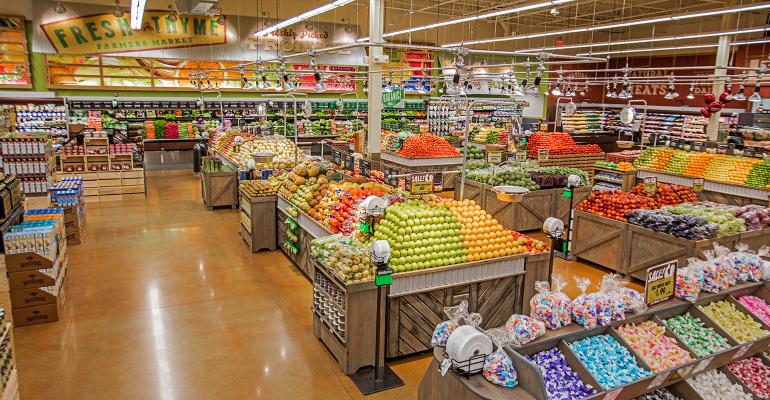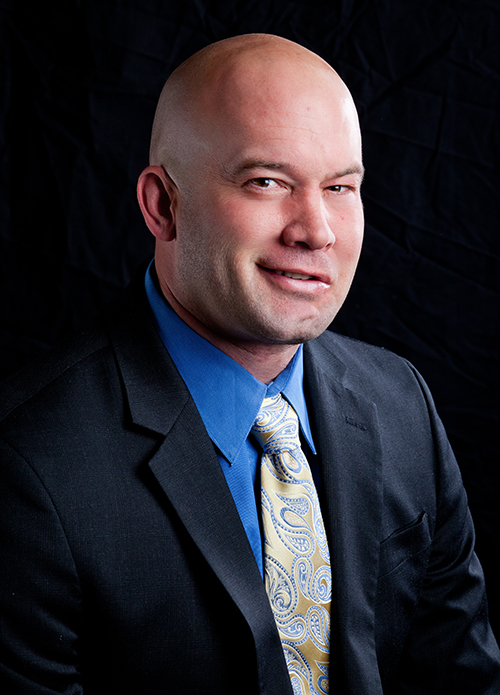
Fresh Thyme CEO: ‘We’re here to stay'
Chris Sherrell reflects on three years of rapid growth
Chris Sherrell opened the first Fresh Thyme Farmer’s Market nearly three years ago with a vision of establishing not only the Midwest’s first farmer’s market-style store, but also its first true healthy lifestyle retail brand.
So far, so good. In an interview with SN, the CEO of the Downers Grove, Ill.-based retailer acknowledged he has accomplished even more than he set out to when he first discussed that vision with SN in 2013. A plan to open 54 stores in six years has resulted in 48 stores in less than three years, with about 20 new locations on the schedule this year and next.
 While not every site has been a home run, and the company is not immune to the challenges of competition and price deflation affecting industry counterparts, Sherrell said the chain has surpassed $500,000 in annual sales, or a rough average of between $10 million and $11 million per store per year. (Its more mature counterpart Sprouts, by contrast, averages nearly $16 million in annual
While not every site has been a home run, and the company is not immune to the challenges of competition and price deflation affecting industry counterparts, Sherrell said the chain has surpassed $500,000 in annual sales, or a rough average of between $10 million and $11 million per store per year. (Its more mature counterpart Sprouts, by contrast, averages nearly $16 million in annual
As Fresh Thyme shoots toward still more sites, and greater store productivity as consumers take to the concept, Sherrell said his bet on including more foodservice than the typical farmer’s market has been a success, and that investor Meijer Inc. retains its belief in the concept.
Following is an edited transcript of SN’s interview with Sherrell which took place late last month.
SN: How are things going at Fresh Thyme?
Chris Sherrell: Things are going great. We’ve opened 48 grocery stores in the last two and half years and we’ve pretty much established a brand in a short time frame. We’ve hired 5,000 employees, about 130 or 140 support staff, and we’ve opened a distribution center. Things are going very well.
Clearly we’ve had some challenges here and there, but the overarching story is we’re past the point being a start-up now. We’re here to stay.
SN: This would indicate things are progressing faster than you initially forecast. How did that happen?
Sherrell: A couple things. We had some initial successes which of course always give you the confidence to do things a little faster. We saw some real estate opportunities. Real estate can be very opportunistic and when the right sites were available you’ve got to take advantage or run the risk of it not being there down the road. That played in too. Our investors were OK with us picking up the speed, so we picked it up. We had planned 54 stores in six years, now we’re roughly there already. We’ll have about 70 by the end of this year and we’ll open about 20 next year. So by four and a half years we’ll have about 90 stores.
 SN: How has the concept evolved from initial plans? Does the store today look like you imagined it would?
SN: How has the concept evolved from initial plans? Does the store today look like you imagined it would?
Sherrell: It does. There were some changes, but they came from successes we’ve had. It wasn’t like we pulled back from things that haven’t worked. We had plans to make changes from the traditional farmers market concept and a lot were in the foodservice department — absolutely, those changes are paying off. We are seeing huge increases in percentage over the traditional farmer’s market format in foodservice so we continue to grow that area, adding linear square footage and new cases.
Our fresh-squeezed juice and berry bar, infused waters and some of the in-store prepared stuff has really taken off. We’ve taken that juice bar from in line back in the produce department to right out on the sales floor. And the biggest thing from a store standpoint is organics. We continue to see growth in organics and so we’re continually adding more produce space to them and focusing on the organic side of the business.
SN: What would you point to as the differences between the stores that are doing best and those not doing as well?
Sherrell: The obvious answer is competition. We have some competitors fighting for their market share a little harder than others. Some are more innovative than others. And some compete based on their concept a little better. The next thing would be the quality of the real estate, and after that, execution — how well we do what we’re doing.
 SN: What would you say Fresh Thyme does well?
SN: What would you say Fresh Thyme does well?
Sherrell: I think we do a lot of things well but specifically, we want to be your store for produce. We want to be the destination for fresh. We think we have the best value produce out there in the Midwest, and one of our top goals is to beat everybody on their produce pricing, everyday, with high quality produce.
From a what-else-do-we-do-well standpoint, what stands out beyond the daily execution of the concept is that we continue to focus on changing people’s life from a health perspective, and making Fresh Thyme an experience. When you come there you might find products you haven't seen. You might transition your eating habits a little healthier every time you go there. You will learn something from a vitamin or supplement standpoint.
I don’t want to say it’s a treasure hunt, because that’s not what it is, but we want our shopping experience to be memorable in the sense that, it’s not the same thing day in and day out. We love bringing in new things, and bring back that fun experience.
SN: How do people typically shop a Fresh Thyme store?
Sherrell: Due to our high volume of fresh products we get customers coming in more frequently than more conventional grocery stores. We’re seeing people three times a week. That’s pretty consistent with the concept. We encourage people to buy things as they need them and not just stock up at the beginning of the week.
 SN: This last year hasn’t been easy on natural/organic specialty retailers, with Whole Foods, Sprouts and Natural Grocers all experiencing some degree of difficulty as a result of deflation and greater competition. Have you experienced the same? What’s going on out there in the natural/organic space?
SN: This last year hasn’t been easy on natural/organic specialty retailers, with Whole Foods, Sprouts and Natural Grocers all experiencing some degree of difficulty as a result of deflation and greater competition. Have you experienced the same? What’s going on out there in the natural/organic space?
Sherrell: The most important thing to recognize about the natural/organic space is that it’s growing and growing. Awareness from the consumer standpoint has never been higher and that’s only good.
With that said, you are getting interest from the conventional players out there who are making a bid for the natural/organic space and whenever something like that happens, you get a new kind of competitive base. We’re seeing some dilution in natural/organic sales. But when push comes to shove, when you transition your life and make a commitment to your health, you go to the natural/organic stores because that’s where you get the one-on-one experience, and the knowledge. We’re not just putting organic items on the shelf.
The economy has not been an issue for us. We have some markets in the Midwest doing really well, fantastic. We have had some deflation this year that was real. We dealt with it. We’ve got what we call our own, manufactured deflation. What I mean by that is that we’ve rolled out 600 or 700 private label items this year and they are better priced than national brands. What happens is, in a short time they become the No. 1 seller in their category, and with that you get a manufactured deflation because it’s cheaper product, even though in most cases it’s better quality. We will eventually cycle that.
Otherwise, you open 100 stores you’ll have a couple that underperform. That’s always the case. But we’ll work to get ’em where they need to be.
SN: What has the new distribution center meant for the business?
Sherrell: We opened a 315,000-square-foot distribution center in Bolling Brook [Ill.], not too far from the support office. We put a bunch of money into it and we’re ready for it to serve us for many years. It can service well over 100 stores. And the unique thing is we’re creating a very robust supply chain whereby we’ll be able to service all of our stores within 24 hours from one distribution center. We won’t have one store outside of 600 miles from the center, and most within 500. That’s creating a great network for us.
SN: What other changes can we expect?
Sherrell: Right now we are in the midst of a hiring a president, a chief merchant and some operations folks. We’re looking to get some industry veterans on board to continue this growth.
Being such a new company our focus for the first couple of years has just been on blocking and tackling, good store execution, getting the right prices, getting the right product mix. Now we’re really starting to come out of that. We feel we’ve got a good base to what we’re doing.
One of our internal initiatives this year is we’ve got 5,000 employees, now we’re at a stage where we are making this the best place to work, and a culture that breeds hard work, safe work and loyalty to our beliefs.
Our plan is to build 15 to 25 stores a year, and we’ve got 20 for 2018 already and 20 or maybe 21 in fiscal 2017.
We have surpassed the $500 million mark in sales and are heading toward three-quarters of a billion. Profits? We’ll get there. Were on track. But when you open 48 grocery stores in two and a half years, profits aren’t there yet.
No comments:
Post a Comment